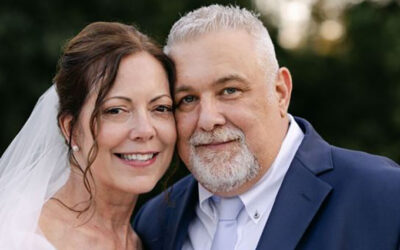Seizures occur when there are quick changes in the electrical activity in the brain.
They may affect both sides of the brain or only one side. Symptoms happen suddenly and can vary depending on the type. Learn more about the different symptoms in our How to Spot a Seizure infographic. Knowing the basics about seizures—and what to do if someone has one—can ease your fears and help someone having a seizure get the care they need.
Focal and Generalized Types
A focal seizure occurs when one small part of the brain is involved. People who have this type usually stay awake and may have changes in sensation, confusion or twitches.
A generalized seizure affects both sides of the brain. A generalized tonic-clonic seizure is the type that many people first think of when they hear the word “seizure.” During this type, a person may fall, have intense muscle spasms, lose consciousness and make sounds. Other generalized types may cause someone to stare off quietly as if they’re looking at something that isn’t there.
Secondary generalized seizures start as focal seizures but move to other parts of the brain.
Some people with epilepsy experience multiple types at different times. They may also have a warning sign before having one, including:
- Anxiety
- Nausea
- Visual symptoms, such as seeing spots or wavy lines
What to Do If Someone Has a Seizure
If you witness someone having a seizure, stay calm. Most are not medical emergencies, but they still require attention and care.
For all types:
- Stay with the person.
- Time the seizure to know how long it lasts.
- Use a calm, comforting tone of voice.
If the person falls, loses consciousness or shakes a lot:
- Help lower them to the floor safely.
- Gently roll them onto their side.
- Check to see if they are wearing a medical bracelet or necklace.
- Loosen or remove clothing or jewelry around their neck.
- Move any hard or sharp objects that might cause injury.
- Place something soft under their head, such as a folded sweatshirt.
- If they are wearing glasses, take them off.
After the seizure:
- Help them move to a safe area where they can rest.
- If the person lost consciousness, explain what happened using simple words.
- If the person is a stranger, check that they have a safe way home.
What Not to Do
Knowing what not to do when a person has a seizure is essential.
- Do not attempt to give CPR or mouth-to-mouth breaths.
- Don’t try to hold them down or stop their movements.
- Never put anything in their mouth.
- Wait until the person is fully awake and aware to offer any food or water.
When to Call 911
In most cases, you do not need to call 911 for a seizure. However, there are certain times when the person may need emergency support. Call 911 if someone:
- Experiences multiple seizures in a row
- Has a chronic health condition or are pregnant
- Has difficulty breathing, waking up or walking afterward
- Is injured
- Never had a seizure before
- The seizure lasts five minutes or more
Seizures in children are alarming, and it’s understandable for parents and caregivers to be concerned. Learn from one of our exceptional pediatric neurologists about seizures in children.




